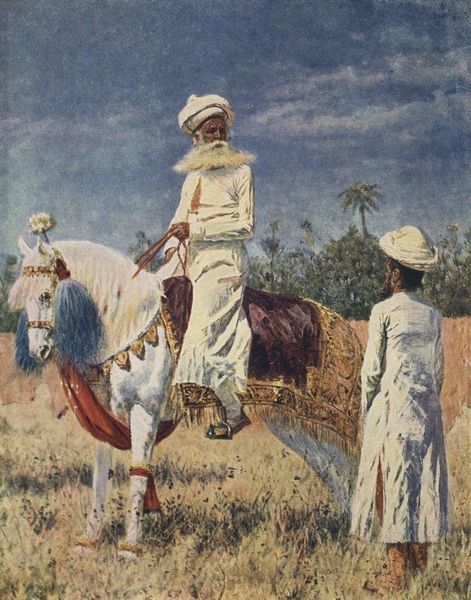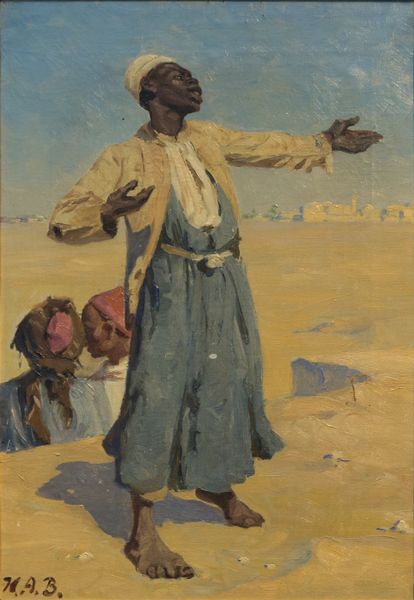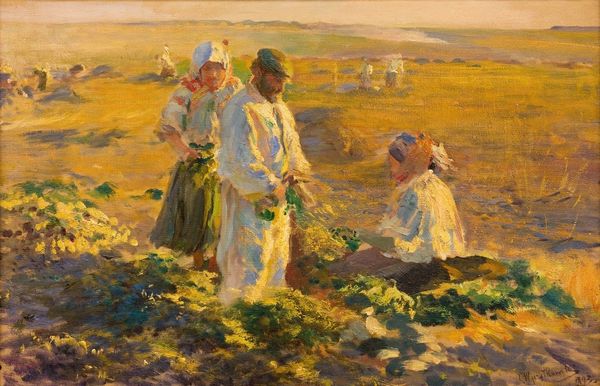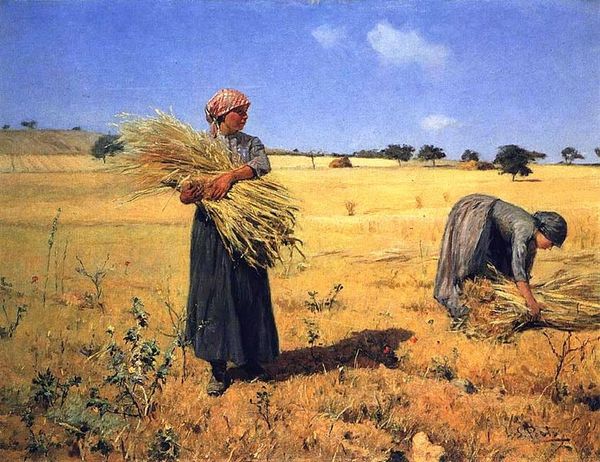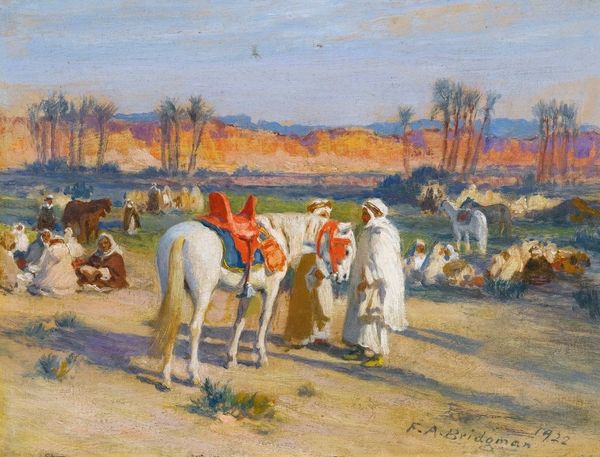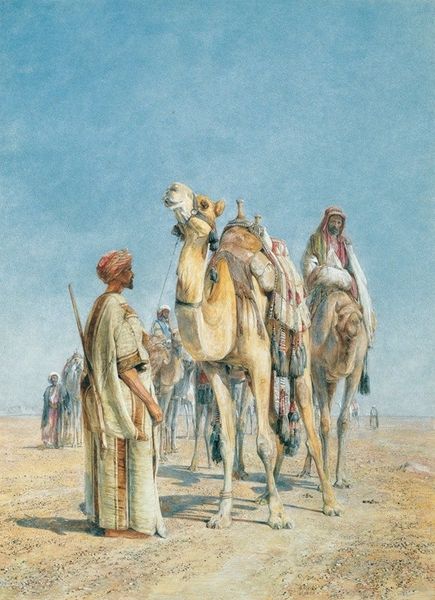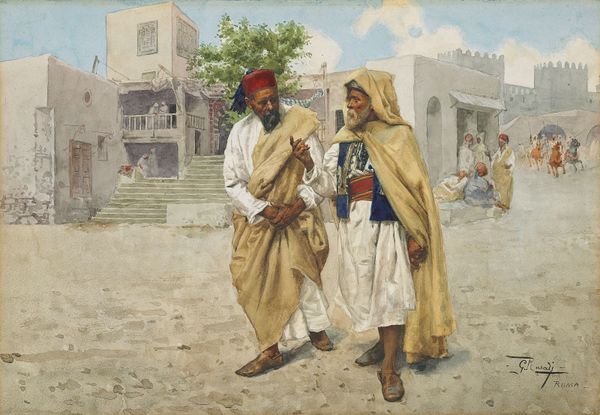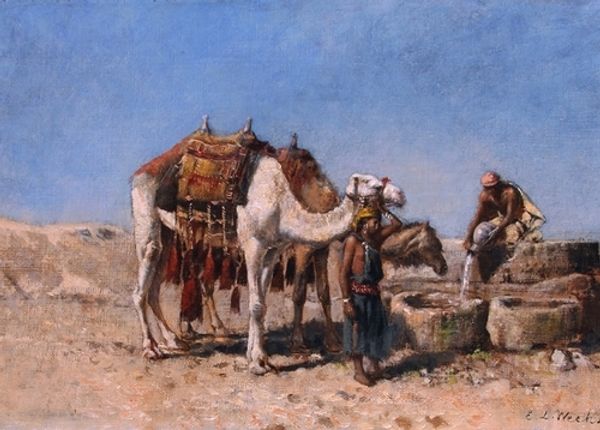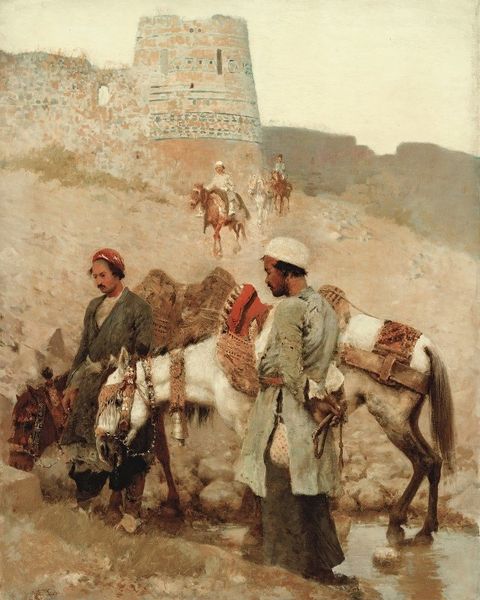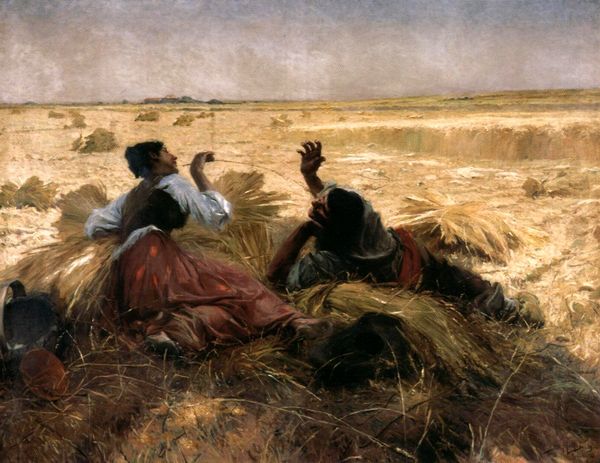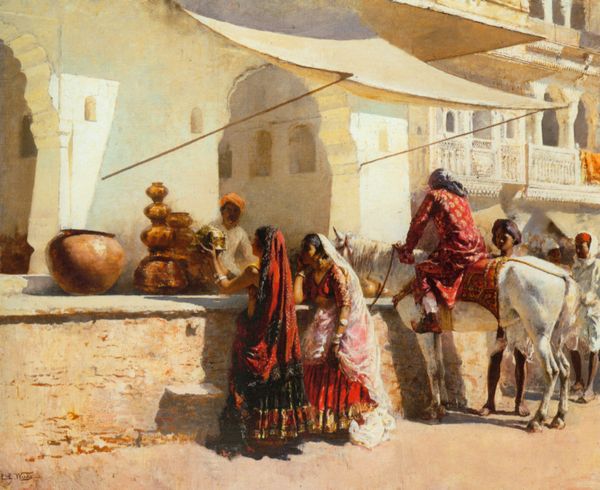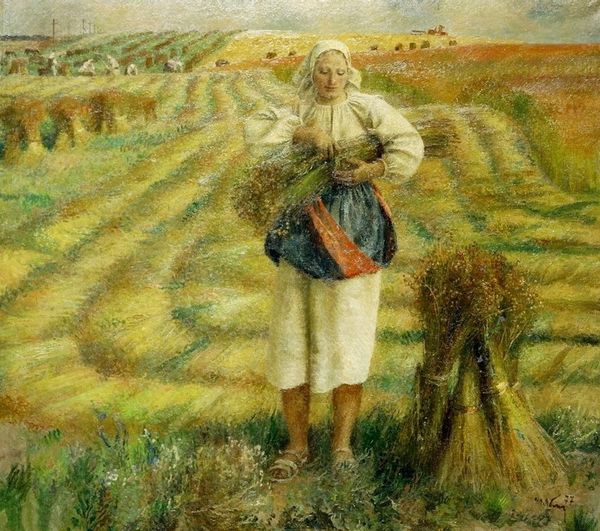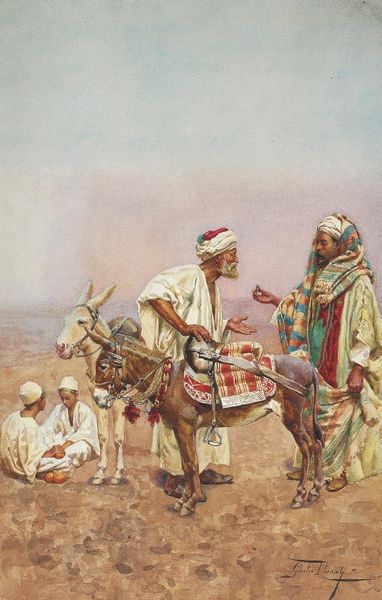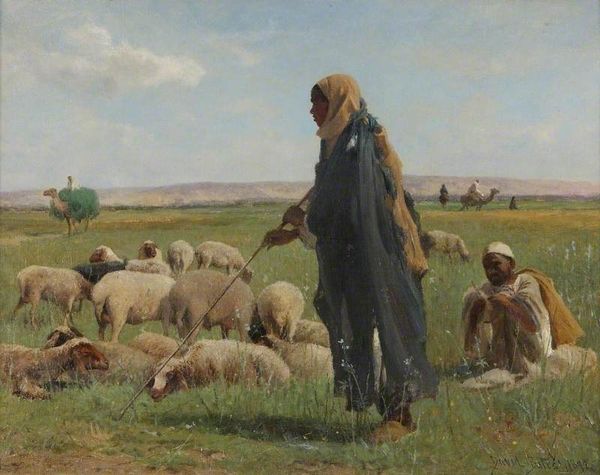
painting, oil-paint, impasto
#
portrait
#
gouache
#
figurative
#
painting
#
oil-paint
#
oil painting
#
impasto
#
orientalism
#
watercolour illustration
#
genre-painting
#
watercolor
#
realism
Copyright: Public Domain: Artvee
Editor: This is "Rider in Jaipur," painted around 1880 by Vasily Vereshchagin, using oil paints. I am immediately struck by the contrast of the pure white figure against the warm, earthy tones. What do you see in this piece? Curator: Beyond the immediate aesthetic appeal, I see a rich tapestry of cultural symbolism woven into the very fabric of this painting. The white attire, for instance, resonates with themes of purity and status. Think about how the color white operates in different cultural contexts. In this Jaipur setting, does it evoke mourning, celebration, or something else entirely? Editor: Interesting. I hadn't considered the symbolic weight of the color itself. So, you’re saying the white isn't *just* white? Curator: Precisely. It’s a visual marker. And consider the horse, adorned so elaborately. What does that signify about the rider's position, his relationship to power? The artist might be exploring themes of conquest, tradition, or even a critique of Orientalist fantasies. Editor: The adornment feels performative somehow, as if announcing something about the rider. Almost like he embodies a certain kind of visual expectation. Curator: Yes, visual expectation…and perhaps also cultural memory, how such images reinforced particular understandings—or misunderstandings—between East and West. Editor: I can see how Vereshchagin isn't simply depicting a scene but engaging with a complex cultural dialogue. Curator: Exactly. And this dialogue continues, doesn’t it? How do we view such depictions today, knowing what we do about the history of representation? Editor: That’s really helpful to consider. Now I see the piece as not only a painting but also a conversation about the visual language we use to understand each other.
Comments
No comments
Be the first to comment and join the conversation on the ultimate creative platform.
